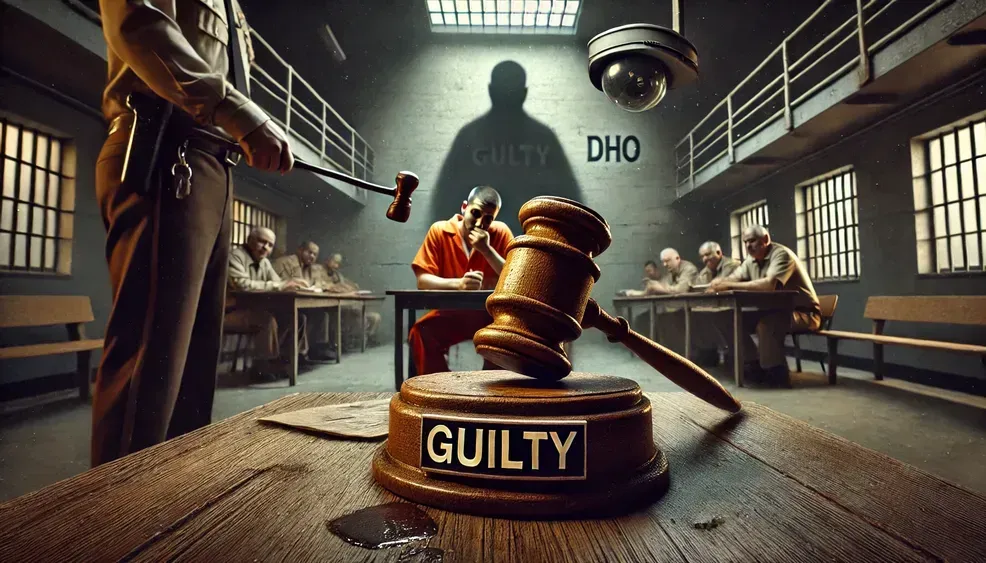One of the most significant factors contributing to prolonged incarceration in the federal prison system is the loss of Good Conduct Time (GCT). This penalty is supposed to be reserved for the most serious infractions, such as drug possession, weapons violations, or failed drug tests. However, it is often applied even for minor infractions like possession of a cell phone. The underlying issue lies in the deeply flawed standard of evidence used by the Federal Bureau of Prisons (BOP).
A Lower Standard of Evidence
In the American legal system, the standard of evidence required to deprive someone of their freedom is “Beyond a Reasonable Doubt.” This principle is a bedrock of due process. However, within the BOP, disciplinary hearings are conducted by Disciplinary Hearing Officers (DHOs), who are neither legally trained nor consistently knowledgeable about BOP policy.
In these hearings, the standard of proof is alarmingly low—relying only on "Some Evidence." This vague threshold allows for the arbitrary extension of sentences, exclusion from rehabilitative programs for a decade, and an overall increase in an inmate’s custody classification score, making early release far less likely.
When conflicting evidence arises, the DHO is tasked with weighing it and determining the “Greater Weight.” In practice, this nearly always means favoring the testimony of the reporting staff member, regardless of inconsistencies or the credibility of the inmate’s defense. This process resembles a Kangaroo Court, a mere performance of due process rather than an actual safeguard of justice.
Abuse of the System
The absence of robust evidentiary standards opens the door to widespread abuse. A common example involves the discovery of contraband, such as a cell phone in a communal area. Rather than conducting a thorough investigation, staff members often issue identical incident reports to every inmate nearby. Even if one inmate takes full responsibility, the others are still routinely found guilty.
This approach is not just unfair—it is deeply flawed. The assumption that correctional officers are inherently honest is no longer valid. Two decades ago, the indictment of a federal correctional officer was a rarity. Today, hundreds of BOP staff members are arrested and charged with corruption every year. The potential for abuse is staggering. A corrupt officer could easily plant contraband near an inmate targeted for removal, fabricating evidence with little to no oversight. The risk of inmate-on-inmate retaliation through corrupt staff further compounds this issue, making the system vulnerable to manipulation by those with power and influence behind bars.
A Flawed Punishment Model
The BOP’s disciplinary system is inherently biased against inmates. The DHO cannot be truly impartial, correctional staff are not always trustworthy, and inmate informants are often incentivized to lie. Yet, the BOP operates on a “Punishment First” model, prioritizing punitive measures over fairness, rehabilitation, or factual accuracy.
Phones, for example, should not be classified as a "Greatest Severity" offense. An inmate caught with a contraband phone has already suffered a serious consequence—the financial loss of thousands of dollars. Similarly, weapons are so frequently discovered during mass shakedowns that incident reports are often disregarded. The reality is that punishing inmates without direct evidence of wrongdoing serves no legitimate purpose.
Technology Can Offer Solutions
With nearly every area of BOP facilities under video surveillance, there is no excuse for lazy investigative practices. Yet, DHOs often issue guilty verdicts without requiring staff to review security footage. AI-powered video management systems could revolutionize this process by making it easier to retrieve relevant footage through simple text-based searches, eliminating the excuse of tedious manual review.
Further, applying AI-driven decision-making models could introduce fairness into the disciplinary process. Imagine a scenario where both the DHO and the inmate submit evidence to an impartial AI system—such as ChatGPT—tasked with analyzing all available data and providing a probability-based assessment of guilt. Such a system would be exponentially more objective than the current flawed process and would significantly reduce wrongful disciplinary actions.
Solutions for a Fairer Disciplinary System
- Raise the standard of evidence for inmate disciplinary hearings to “Preponderance of Evidence” or higher.
- Require the review of all available video footage before issuing disciplinary sanctions.
- Implement AI-based video search tools to streamline incident investigations.
- Remove non-violent contraband offenses, such as cell phones, from the “Greatest Severity” classification.
- Hold DHOs and correctional staff accountable for biased or wrongful disciplinary actions.
- Introduce third-party oversight into the BOP disciplinary process to ensure fair and impartial hearings.
The BOP’s current disciplinary system is broken. By prioritizing punishment over justice, it undermines rehabilitation, increases recidivism, and erodes trust in the criminal justice system. Reform is not just necessary—it is urgent.
